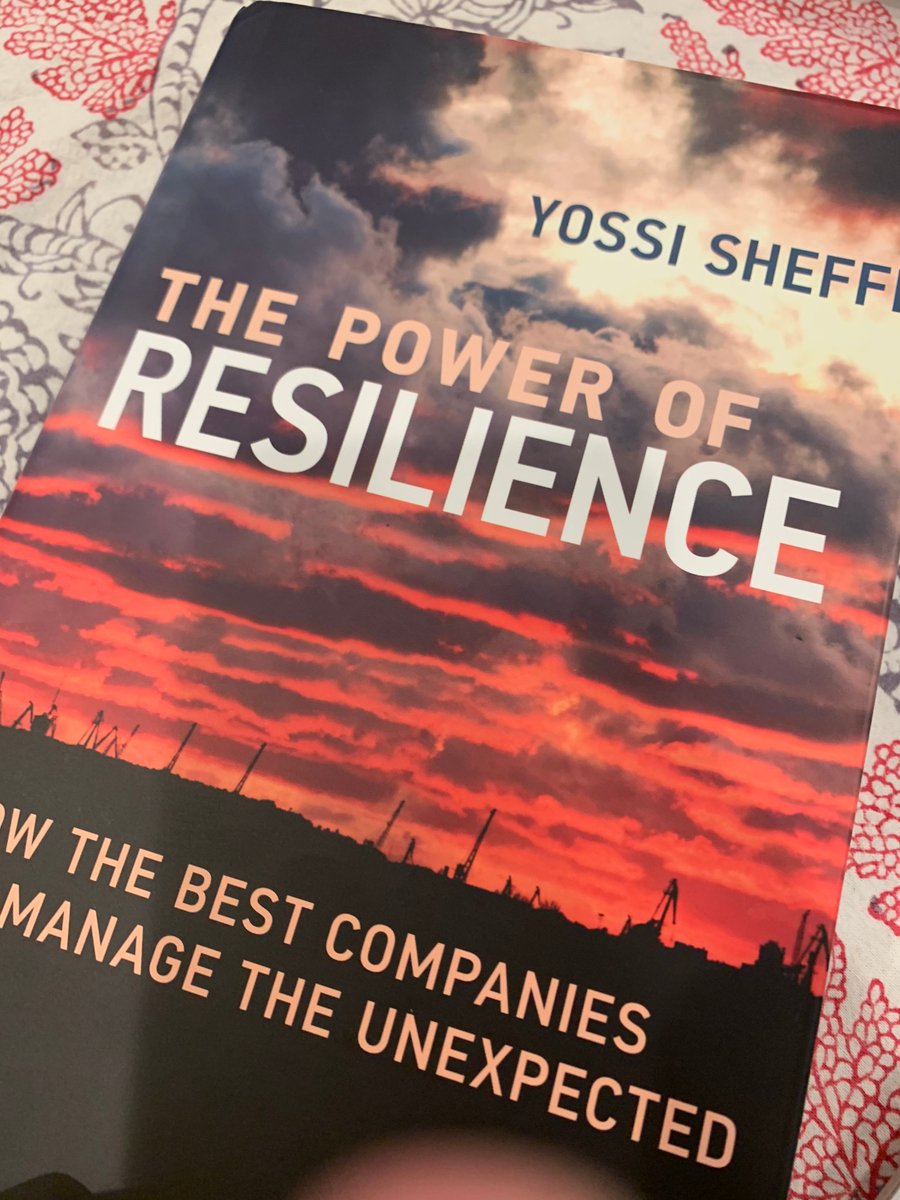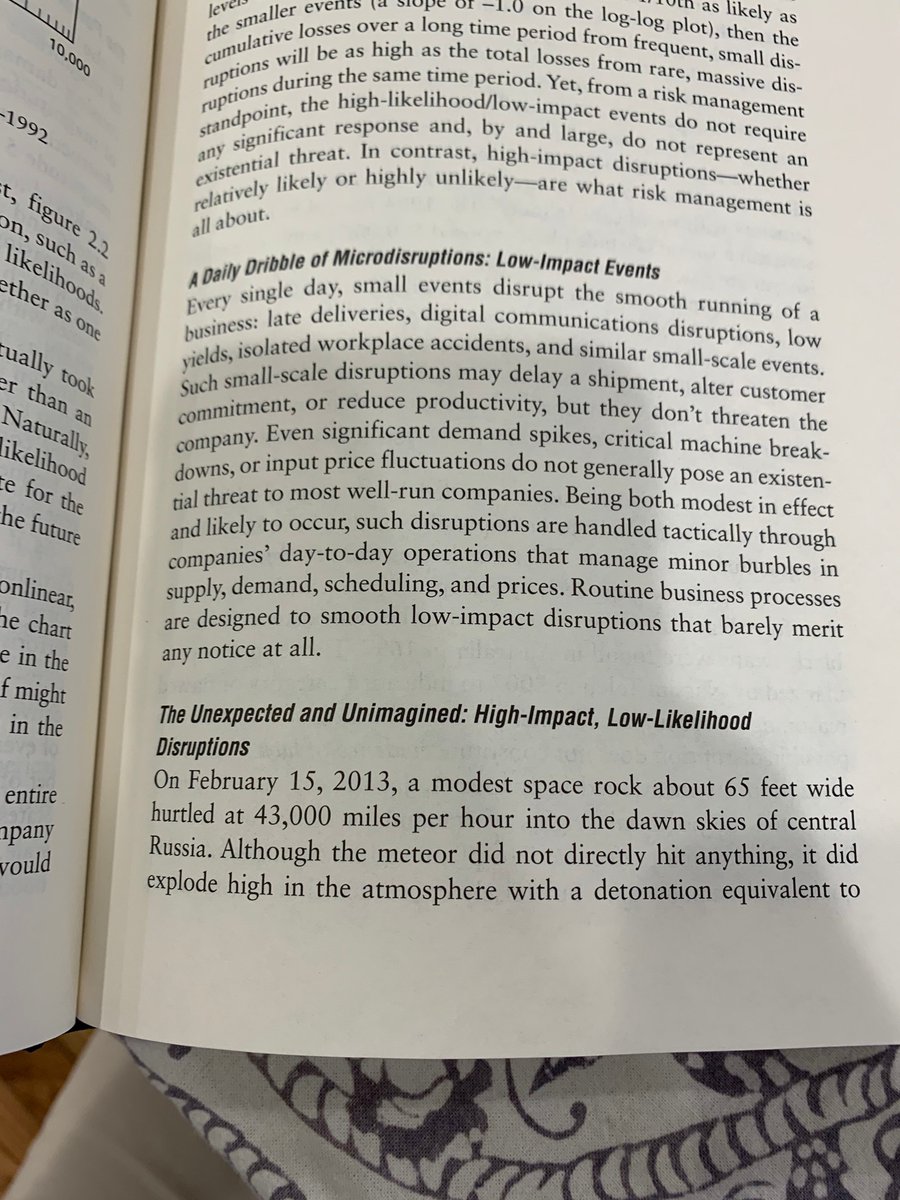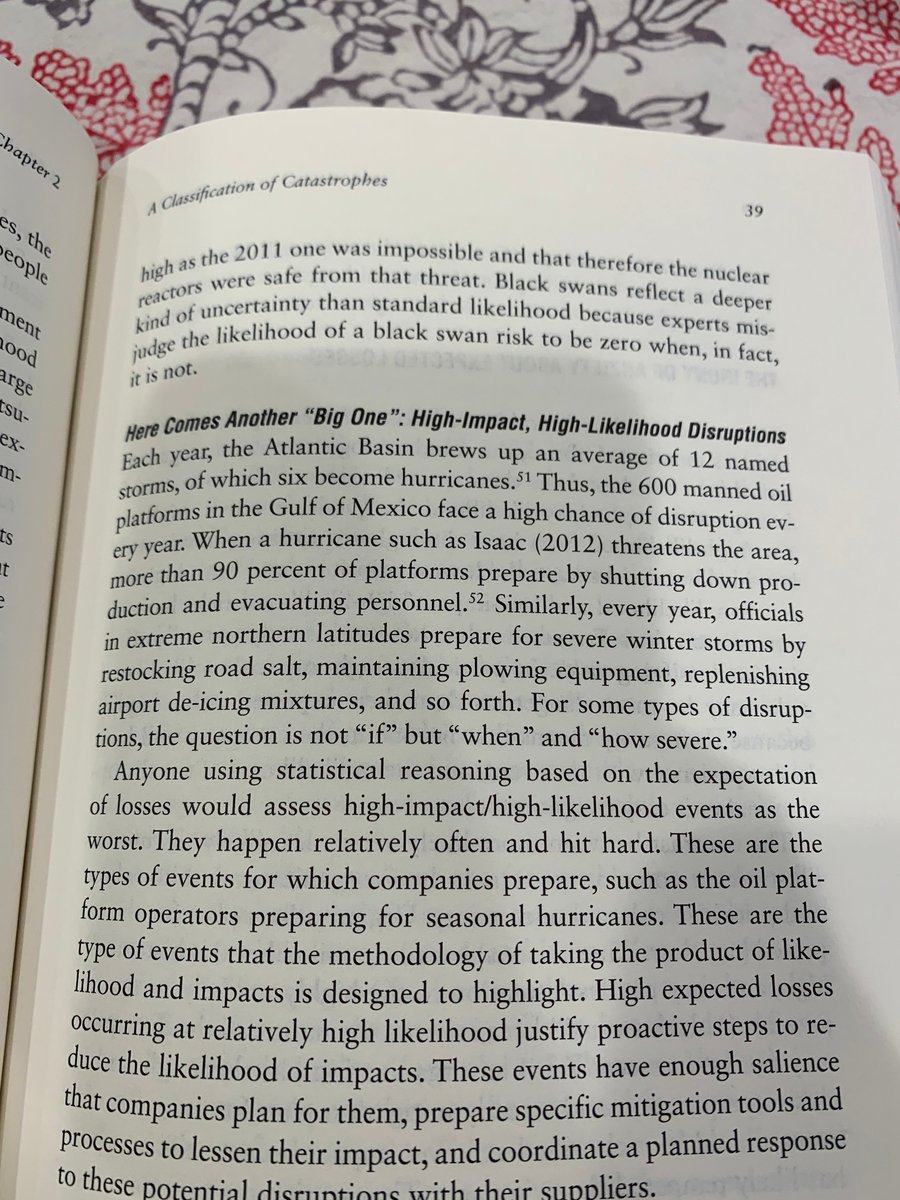On Friday I scanned my bookshelf and noticed Yossi Sheffi’s 2015 book The Power of Resilience. Seemed like a good time to crack it open and make it past the first 15 pages this time, as I had failed to when I first received it. /1
That act felt like a good representation of what a supply chain manager must be going through at present. Probably not considering the importance of resiliency enough in 2015 and now taking a hard look at what it means. /2
While it’s clear the COVID-19 crisis was difficult to prepare for, it’s tough to determine where it falls within Sheffi’s “classification of catastrophes” in the book. /3
The two most appropriate ones would be disruptions he called “high-impact, low likelihood,” or “high impact, high likelihood.” It largely depends on whether one views a virus-based global pandemic as predictable or not. /4
Either way, supply chain managers need to view ongoing risk according to what Sheffi, director of the MIT Center for Transportation and Logistics, calls the “power law of impact versus likelihood.” /5
Many types of catastrophic events generally follow a power law, Sheffi wrote, that “show a multiplicative inverse relationship between the likelihood and the impacts of events.” /6
Now are you ready for the irony? Sheffi& #39;s 368-page book contains not a single reference to the potential for pandemics to rupture supply chains, including the 2003 SARS outbreak or the 2009 H1NI outbreak. /7
The only mentions of catastrophic viruses affecting supply chains refers to computer viruses, which proved prescient sinc ethe the book came out prior to the notPetya attack that hit Maersk’s and FedEx’s systems in 2017. /8
It goes to show the sheer range of disruptive events for which logistics professionals need to account. That a book dedicated to supply chain resilience doesn’t touch on the biggest supply chain disruption in a century shows the need to proactively plan for the unknown. /9
But the COVID-19 crisis is the outlier event, to say the least. The type that generally compels every organization to do some soul-searching. The value of risk forecasting or monitoring comes from integrating those tools before a crisis small or large hits. /10
So I dove into the topic of what risk monitoring capability means to supply chains that had it before COVID-19 hit, talking with @Mr_Supply_Chain and Shehrina Kamal of @resilience360, a risk monitoring provider owned by @DHLsupplychain. https://www.joc.com/technology/cargo-risk-tools-get-second-look-after-early-covid-19-alerts_20200406.html">https://www.joc.com/technolog... @JOC_Updates

 Read on Twitter
Read on Twitter




